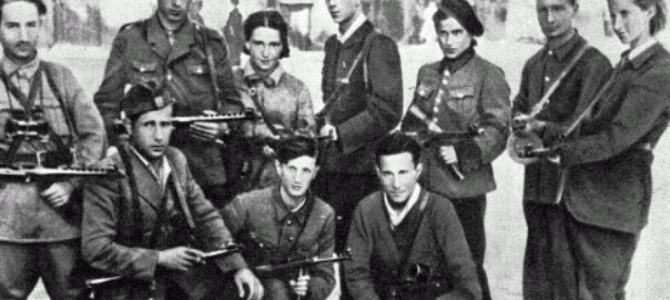
BNS and others
Jospeh Harmatz who led a Jewish attempt to take revenge on the Nazis has died at the age of 91. Harmatz’s son Ronel confirmed he had died Monday.
Harmatz was one of a handful of Jewish “avengers” who plotted to poison many SS officers held at an American POW camp in 1946. More than 2,200 Germans were poisoned during the operation, but none of them died from it as far as anyone knows.
Nonetheless the act took on symbolic meaning for the newly forming State of Israel: the day when attacks against Jews went unanswered had ended.
Harmatz was born in Lithuania and lost most of his family to the Holocaust. He gave an interview to AP shortly before his death in which he said he did not regret his actions or those of others in the Revenge brigade.
“We couldn’t understand why there shouldn’t be payback for that,” he said.
While most Holocaust survivors were too physically exhausted and broken to seek revenge, Harmatz’s group of about 50 mostly young males and females had fought as partisans against the Nazis and couldn’t come to terms with the idea Nazi crimes would go unpunished.
Some members of the group took employment at a bakery serving the Stalag 13 POW camp (formerly used for Allied prisoners, now holding Nazis) built on what had been the Nazi party rally grounds in Langwasser in Nuremberg. Their chance came on April 13, 1946, when three Revenge members put arsenic into 3,000 loaves of bread. The loaves were cut into quarters so that up to 12,000 SS members could be murdered at once. Hartmatz was in charge of the operation and stood guard at the bakery.
In the interview last month, Hartmatz said their goal had been simple: “To kill Germans.” How many? “As many as possible.”
It’s not known why no one died and classified US military documents recently acquired by AP show the avengers had enough poison to kill tens of thousands of people. According to Douglas David, the group intended to kill 6 million Germans.
After the war Harmatz, who used the code name Yulek, moved to Israel, worked for the Jewish Agency and became the director general of World ORT, the Jewish educational organization.
Perhaps the most famous member of the Revenge brigade was Vilnius ghetto resistance leader Abba Kovner, who testified at Nuremberg after the war. The Vilna Gaon State Jewish Museum has a photograph on exhibit showing an inscription written in Hebrew in blood on a wall in Lithuania during the Holocaust, exhorting: “Jews, take vengeance!”

